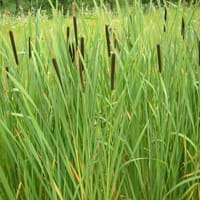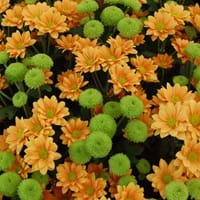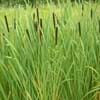Life Span
Perennial
Perennial
Origin
World/Pandemic, North America, Caribbean, Europe, Northern Africa, Asia
Asia, Northeastern Europe
Types
Not Available
Garden mum, Tricolor chrysanthemum, Indian chrysanthemum, Corn marigold
Number of Varieties
Not Available
Habitat
Boggy areas, Near ponds
By seashore, Grassland, Thickets
USDA Hardiness Zone
2-12
3-9
Sunset Zone
21,22
1a, 1b, 2a, 2b, 3a, 3b, 4, 5, 6, 7, 8, 9, 10, 11, 12, 13, 14, 15, 16, 17, 18, 19, 20, 21, 22, 23, 24
Habit
Clump-Forming
Clump-Forming
Flower Color
Sienna, Chocolate
Burgandy, Green, Lavender, Orange, Pink, Purple, Red, Salmon, White, Yellow
Flower Color Modifier
Not Available
Bicolor
Fruit Color
Not Available
Brown, Not Available
Leaf Color in Spring
Green
Dark Green
Leaf Color in Summer
Green
Green, Sea Green
Leaf Color in Fall
Not Available
Green, Sea Green
Leaf Color in Winter
Green
Not Available
Leaf Shape
Grass like
Ovate
Plant Season
Summer, Fall
Fall, Summer
Sunlight
Full Sun, Partial Sun
Full Sun
Type of Soil
Loam, Sand
Well drained
The pH of Soil
Acidic, Neutral, Alkaline
Neutral, Slightly Acidic
Soil Drainage
Poorly Drained
Well drained
Bloom Time
Summer
Early Fall, Fall, Late Fall, Late Summer
Tolerances
Wet Site
Not Available
Where to Plant?
Container, Ground
Ground
How to Plant?
Divison, Seedlings
Grafting, Seedlings, Transplanting
Plant Maintenance
Medium
Medium
Watering Requirements
Does not require regular watering, Water Deeply
Form a Soil ring to water efficiently, Over-watering can cause leaf problems or root diseases, Prefer drip-irrigation instead of Over-head watering, Requires regular watering, Use Mulches to help prevent water loss during hot and windy weather
In Summer
Lots of watering
Lots of watering
In Spring
Moderate
Moderate
In Winter
Average Water
Average Water
Soil pH
Acidic, Neutral, Alkaline
Neutral, Slightly Acidic
Soil Type
Loam, Sand
Well drained
Soil Drainage Capacity
Poorly Drained
Well drained
Sun Exposure
Full Sun, Partial Sun
Full Sun
Pruning
Cut limbs, Remove damaged leaves, Remove dead branches, Remove dead leaves, Remove dead or diseased plant parts
Cut or pinch the stems, Prune for shortening long shoots, Prune if you want to improve plant shape, Prune in summer, Prune to control growth, Remove shoots
Fertilizers
All-Purpose Liquid Fertilizer, Apply 5-10-5 amounts, Apply N-P-K
All-Purpose Liquid Fertilizer
Pests and Diseases
Red blotch
Aphids, Botrytis head rot, Caterpillars, Cutworms, Powdery mildew, Rhizoctonia stem rot, Slugs, Spider mites, Thripes
Plant Tolerance
Wet Site
Drought
Flower Petal Number
Not Available
Single
Edible Fruit
Not Available
No
Foliage Texture
Coarse
Medium
Foliage Sheen
Matte
Matte
Attracts
Birds
Butterflies
Allergy
Skin rash
Asthma, Eczema, Hay fever, Inflammation to sinuses or hives, Skin rash
Aesthetic Uses
Ground Cover, Showy Purposes
Beautification, Bouquets, Showy Purposes
Beauty Benefits
Not Available
Not Available
Environmental Uses
Air purification, soil stabilisation
Air purification
Medicinal Uses
anticoagulant, Astringent, Burns, Diuretic, Emmenagogue, Galactogogue, Haemostatic, Miscellany, Refrigerant, Sedative, Tonic, Vulnerary
Chest pain, Diabetes, Headache, High blood pressure, Swelling
Part of Plant Used
Flowers, Leaves, Root, Seeds, Stem
Leaves
Other Uses
Fibre, For making oil, used for weaving hats, Used in biomass, Used in paper industry, Weaving into Mats and Bags
Employed in herbal medicine, Used as Ornamental plant
Used As Indoor Plant
No
No
Used As Outdoor Plant
Yes
Yes
Garden Design
Dried Flower/Everlasting, Water Gardens, Wildflower
Not Available
Botanical Name
TYPHA latifolia
Chrysanthemums
Common Name
Broadleaf Cattail, Common Cattail
Chrysanths
In Hindi
Broadleaf Cattail
Chrysanthemums
In German
Laub- Cattail
Chrysanthemen
In French
broadleaf Cattail
Chrysanthèmes
In Spanish
Espadaña de hoja ancha
Crisantemos
In Greek
πλατύφυλλων Cattail
χρυσάνθεμα
In Portuguese
broadleaf Tifa
Crisântemos
In Polish
Broadleaf Cattail
Chryzantemy
In Latin
broadleaf Cattail
Chrysanthemums
Phylum
Magnoliophyta
Magnoliophyta
Class
Liliopsida
Magnoliopsida
Family
Typhaceae
Asteraceae
Genus
Typha
Chrysanthemum
Clade
Angiosperms, Commelinids, Monocots
Not Available
Tribe
Not Available
Anthemideae
Subfamily
Pitcairnioideae
Not Available
Number of Species
Not Available
Season and Care of Broadleaf Cattail and Chrysanthemum
Season and care of Broadleaf Cattail and Chrysanthemum is important to know. While considering everything about Broadleaf Cattail and Chrysanthemum Care, growing season is an essential factor. Broadleaf Cattail season is Summer and Fall and Chrysanthemum season is Summer and Fall. The type of soil for Broadleaf Cattail is Loam, Sand and for Chrysanthemum is Well drained while the PH of soil for Broadleaf Cattail is Acidic, Neutral, Alkaline and for Chrysanthemum is Neutral, Slightly Acidic.
Broadleaf Cattail and Chrysanthemum Physical Information
Broadleaf Cattail and Chrysanthemum physical information is very important for comparison. Broadleaf Cattail height is 182.88 cm and width 91.44 cm whereas Chrysanthemum height is 2.50 cm and width 1.50 cm. The color specification of Broadleaf Cattail and Chrysanthemum are as follows:
Broadleaf Cattail flower color: Sienna and Chocolate
Broadleaf Cattail leaf color: Green
Chrysanthemum flower color: Burgandy, Green, Lavender, Orange, Pink, Purple, Red, Salmon, White and Yellow
- Chrysanthemum leaf color: Dark Green
Care of Broadleaf Cattail and Chrysanthemum
Care of Broadleaf Cattail and Chrysanthemum include pruning, fertilizers, watering etc. Broadleaf Cattail pruning is done Cut limbs, Remove damaged leaves, Remove dead branches, Remove dead leaves and Remove dead or diseased plant parts and Chrysanthemum pruning is done Cut or pinch the stems, Prune for shortening long shoots, Prune if you want to improve plant shape, Prune in summer, Prune to control growth and Remove shoots. In summer Broadleaf Cattail needs Lots of watering and in winter, it needs Average Water. Whereas, in summer Chrysanthemum needs Lots of watering and in winter, it needs Average Water.





